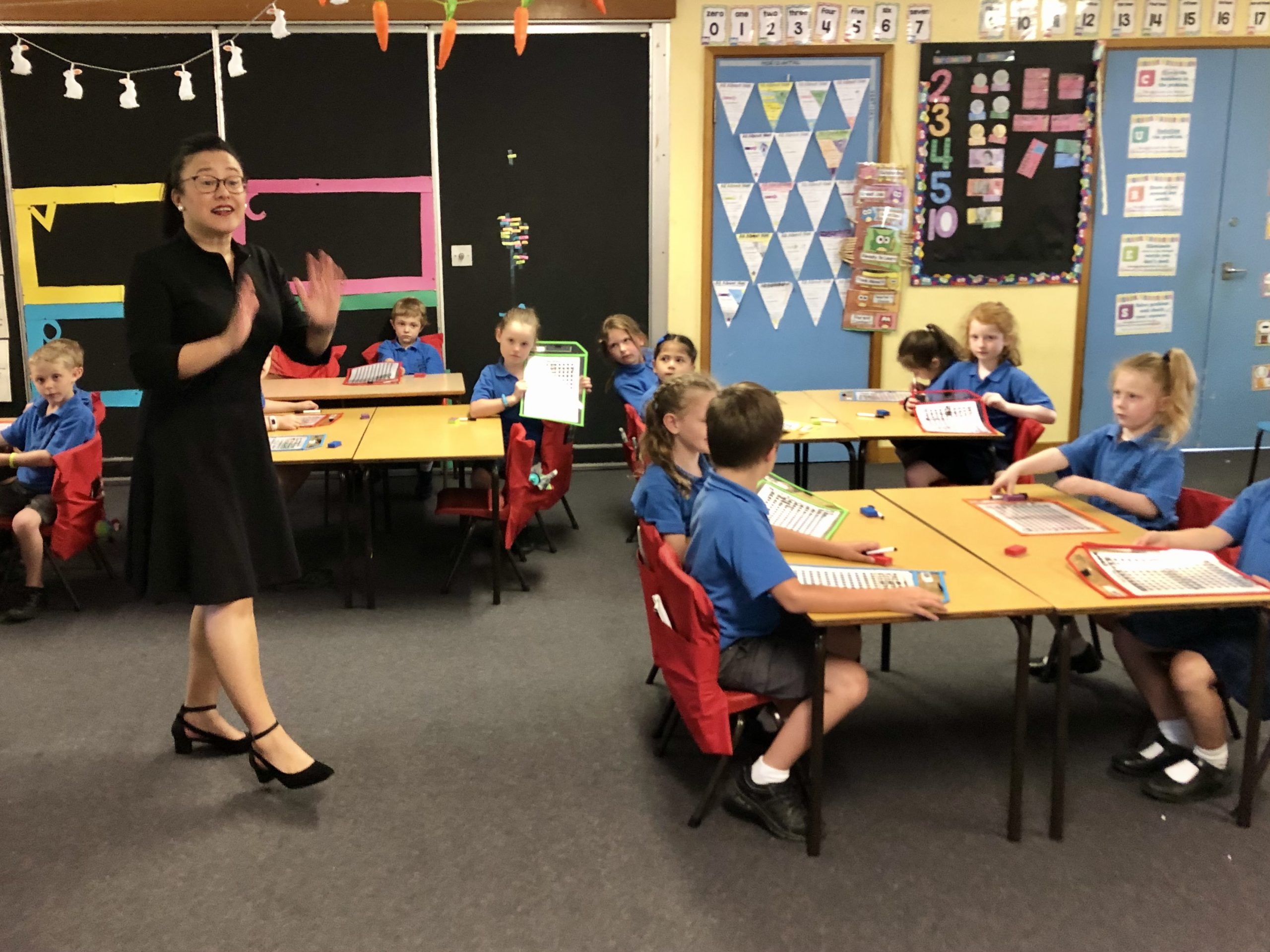
Consistent lesson structure school-wide
School-wide implementation of a consistent lesson structure supports teachers to plan and deliver effective learning experiences to meet the needs and abilities of the full range of learners in maths lessons. Anita’s 5-part lesson structure is easy to implement, increases student engagement and can be used from Kindergarten to Year 6.
Overview of Anita’s 5-part lesson structure
The infographic below is an overview of my 5-part lesson structure. Click on the table to open it in a lightbox for easier reading.
What do I do in each part of the lesson?
PART 1 | Lesson warm-up
The warm-up is your chance to ‘hook’ all students at the start of a maths lesson. Using a range of mathematical language is Anita’s way of engaging all learners.
Knowing your purpose is key. Warm-ups can be used to:
- review prior learning needed for the week of teaching
- fill gaps from learning in previous lessons
- make connections between concepts.
Anita prefers to deliver warm-ups with the whole class seated on the floor and the teacher leading the learning with repeated questioning related to an image or teacher ‘props’. Students respond verbally, but teachers may also have students respond by writing on a visual model insert sheet in a ‘write and wipe’ sleeve or on student whiteboards.
PART 2 | Introduce new content
This part of the lesson should be highly interactive. The teacher leads the learning while students are seated on the floor responding verbally.
Teachers differentiate to make new content accessible and rigorous for all learners by:
- connecting to prior knowledge to build meaning and understanding
- explaining the new content in small steps with student practice after each step
- modelling their mathematical thinking verbally
- using a range of mathematical language
- using concrete materials and/or visual models as appropriate
- modelling written recordings, including words and symbols
- questioning to check student understanding.
PART 3 | Teacher-led practice
Teachers strategically seat students at desks arranged in groups of six (K), groups of four (Y1–Y5) and/or pairs (Y6). Written communication is via student whiteboards.
Students begin to actively practice the new content while teachers ‘walk the floor’ and support them as a whole class by:
- thinking aloud and co-constructing responses with the class
- listening to students use of mathematical language and providing feedback
- identifying misconceptions and providing feedback.
Teachers ensure that students are achieving a high success rate before moving to independent practice.
PART 4 | Student-centred practice
Students work as individuals, in pairs or in small groups on a low-floor high-ceiling task that suits their skill level. Students communicate in verbal and/or written form. Written communication is via student whiteboards and/or maths exercise books (either blank scrapbooks or lined exercise books, but not grid books).
Teachers ‘walk the floor’ to monitor student progress by observing their written recordings and listening to their verbal interactions. They support students to further their understanding and resolve misconceptions by:
- using enabling and extending prompts
- giving students the opportunity to reflect on their work before offering a correction
- providing scaffolds, eg language word walls, concrete materials
- encouraging productive struggle and risk taking.
PART 5 | Reflect on learning
Students are seated as they were during the practice part of the lesson. They describe verbally or in written form (either as a whole class, individually or in pairs) what they have:
- learned during the lesson, and/or
- enjoyed about the lesson.
Teachers give immediate feedback and connect student responses to the mathematical focus of the lesson.
One strategy is asking for a quick thumbs up (good/yes), thumbs horizontal (so-so, maybe) or thumbs down (not good/no) giving all students the opportunity to participate. An advantage of this strategy is that individual reflections are visible to the whole class.







